Hello, fellow travelers! I hope you are all visiting or have visited a wonderful place right now. The joy of it is really like nothing else. I experienced it at the Museum of Archaeology and Ethnography and I continue to share the photos I took there with you. Today we will take a look at the marble workmanship of the past ages!
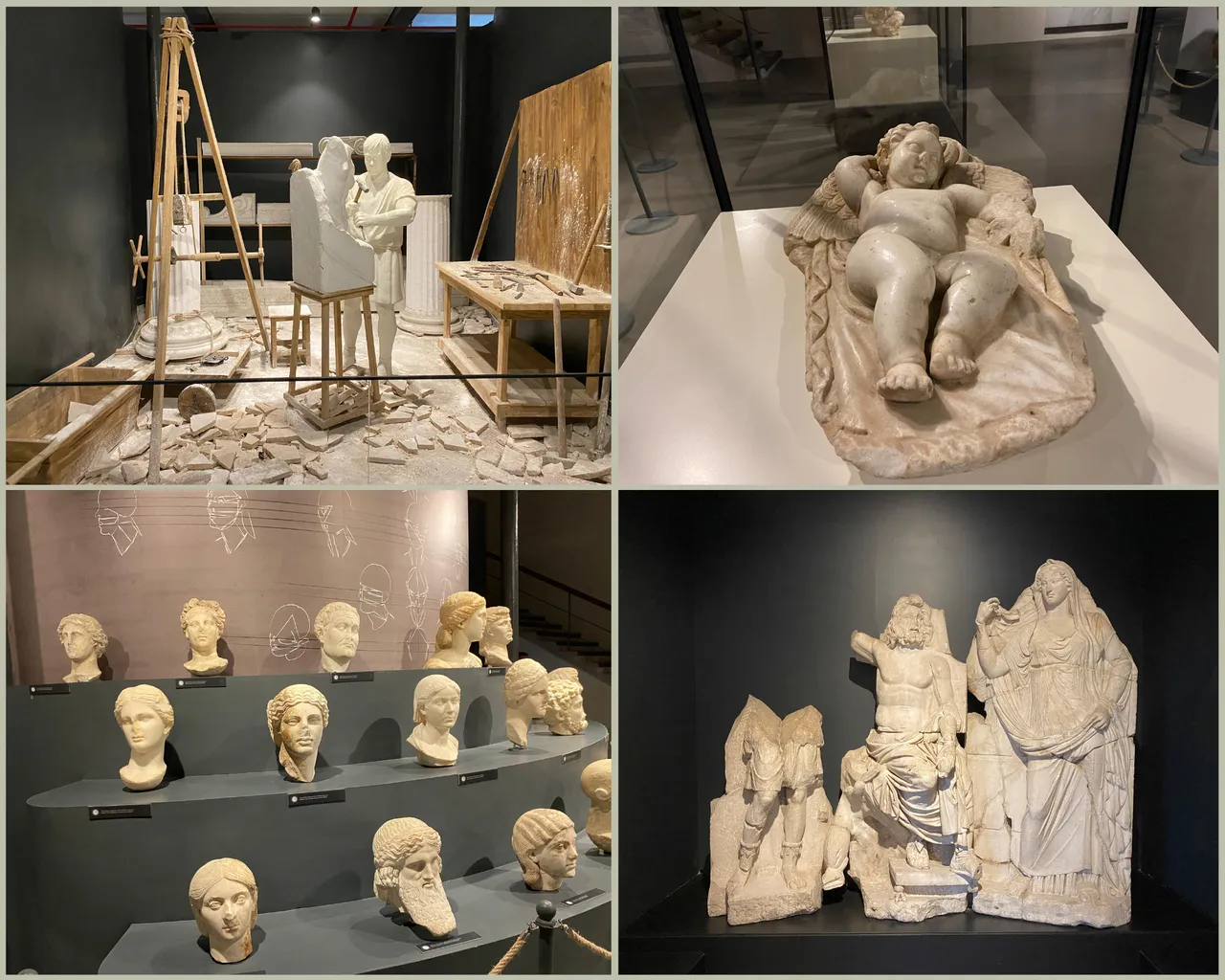

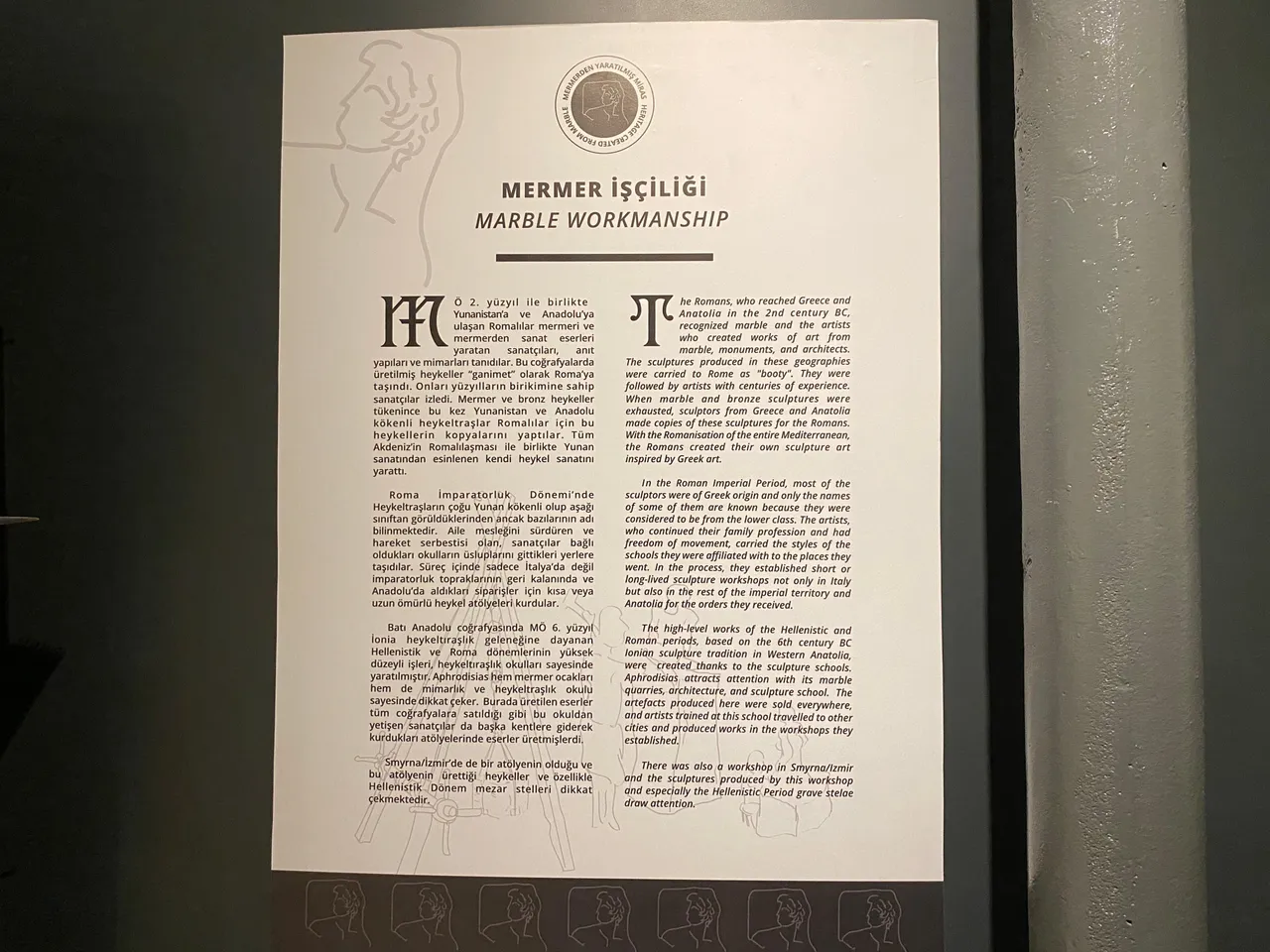
I have always shared with you the impressive sculptures made in ancient times and I have given you some ideas about how these sculptures were made and how long it took to make them. Maybe today we will find answers to all these questions. After the Romans arrived in Anatolia and Greece in the 2nd century BC, they took the sculptures made there and the artists who made them back to their own countries. During the Roman period, most of the sculptors were of Greek origin and were considered low class. That is why we know the names of only a few of them today. We can say that they were not appreciated as they deserved. There were important sculpture workshops in Anatolia and important sculptors were trained in these workshops.
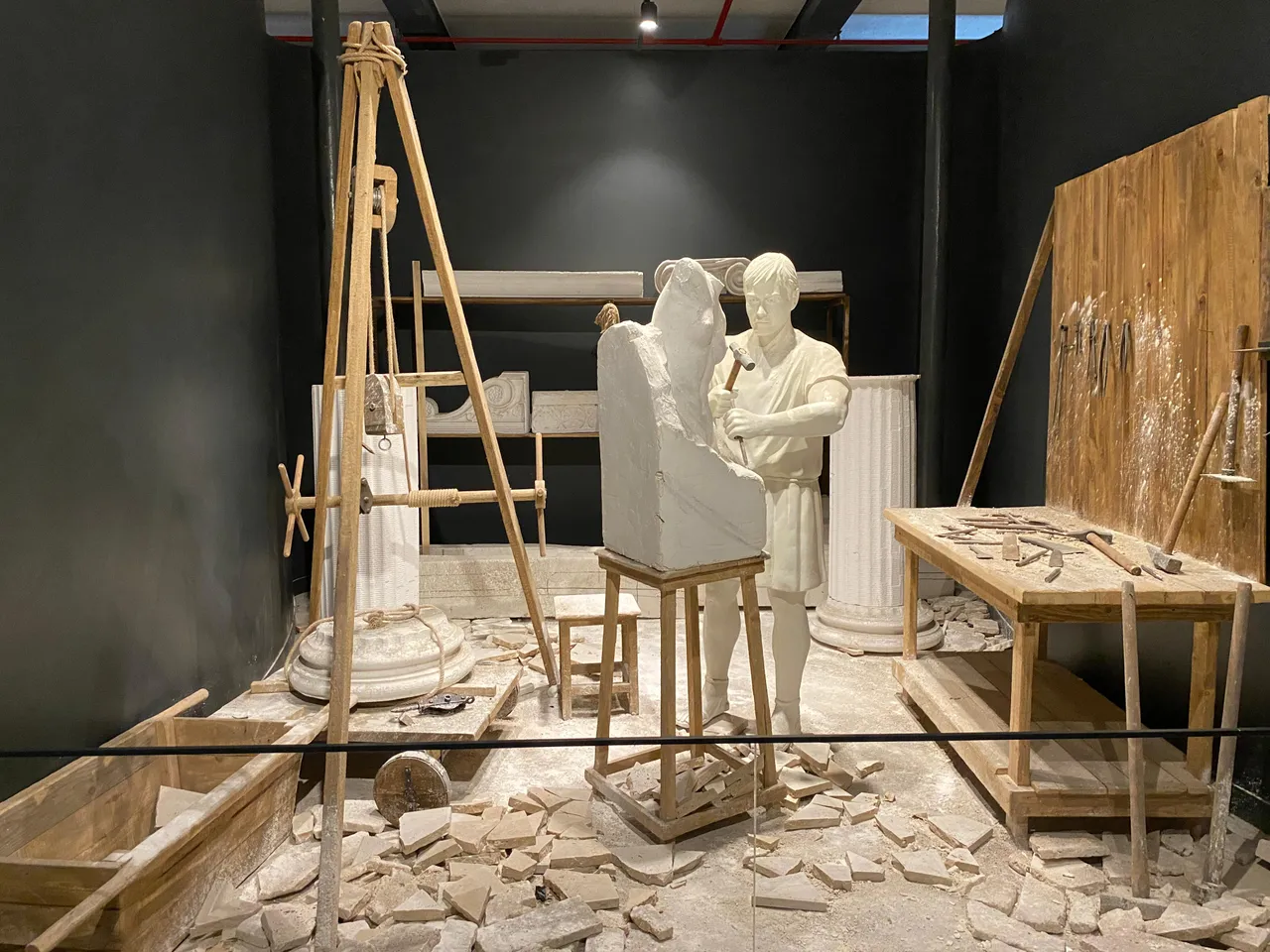
A recreation of a sculpture workshop. It looks like a complete mess, but this is understandable. They can't be constantly cleaning up spills on the floor among so many big sculptures. It's nice that they are making these sculptures on something that can move. Otherwise it would be incredibly difficult for the buyer to take them away after they are made.
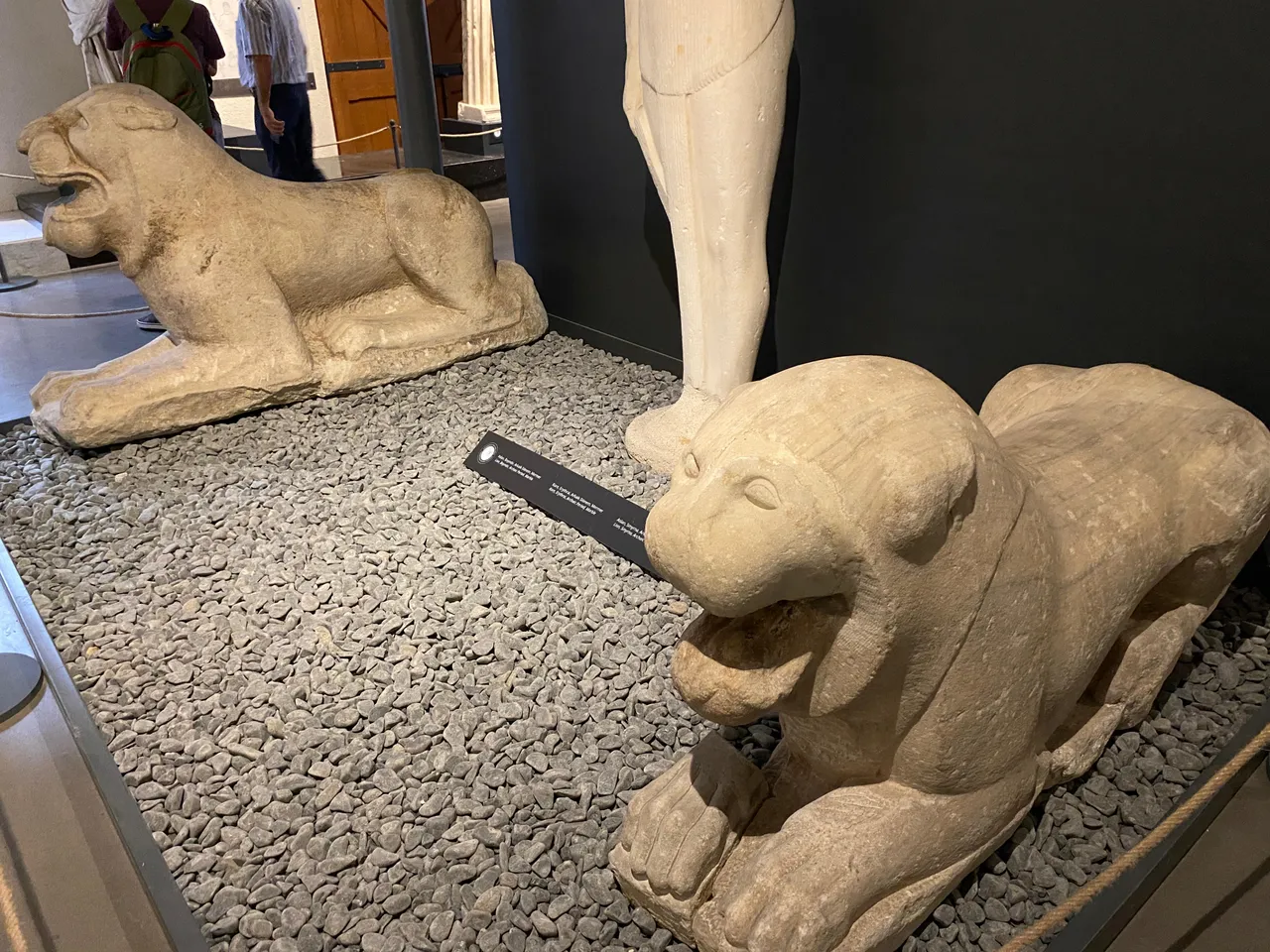
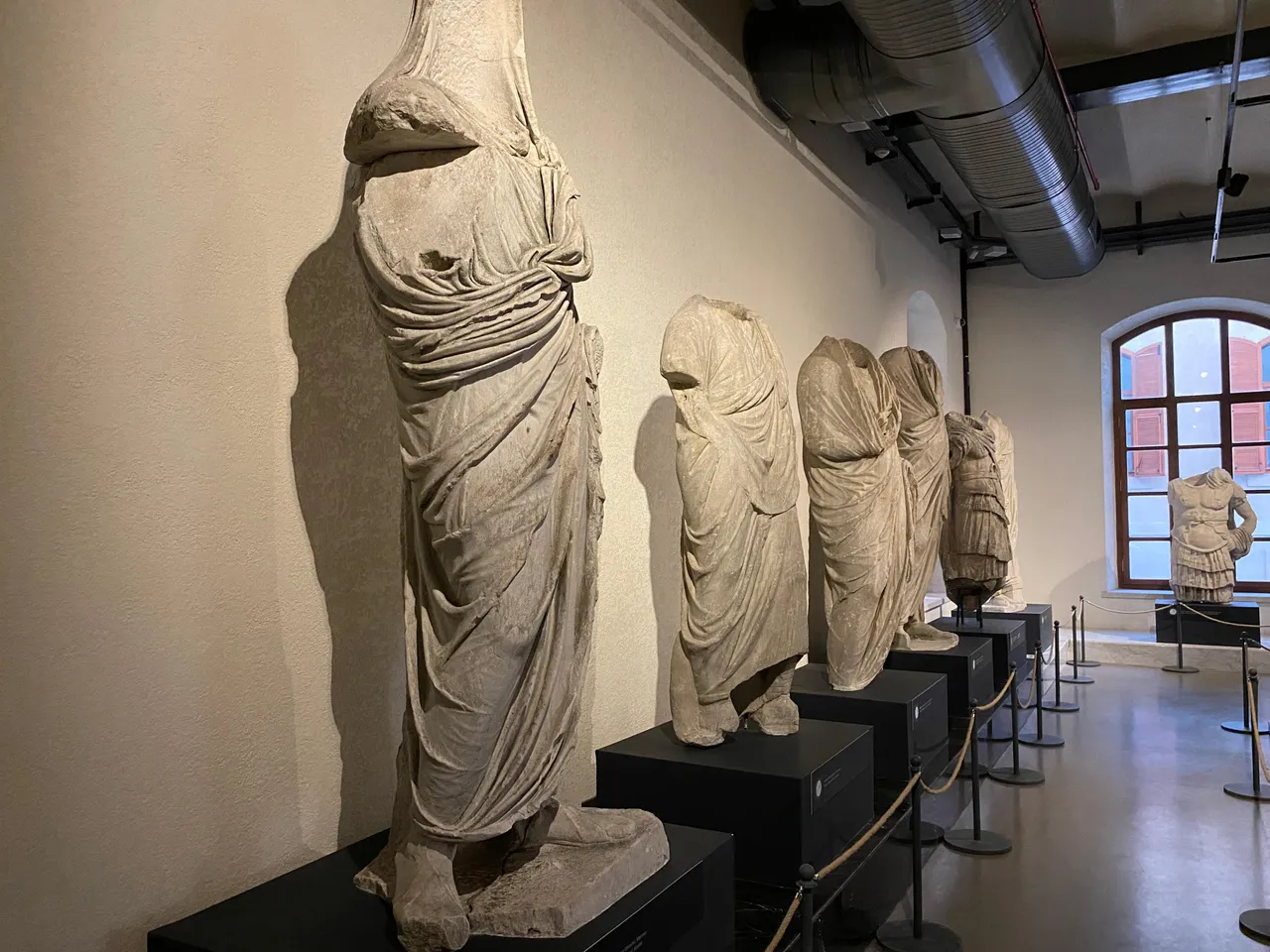
Some beautiful sculptures from that period. Imagine the sculptors talking among themselves. I am making a sculpture of a lion and the hardest part is making the lion's teeth. And I'm doing it for a nobleman and if I don't get it right he'll kill me. The other one probably replies. At least yours is a lion, I'm trying to make a statue of a king, and if I don't get it right, not only will they kill me, they'll burn me alive. I don't know why it suddenly turned into such a bad conversation... It was supposed to be fun...
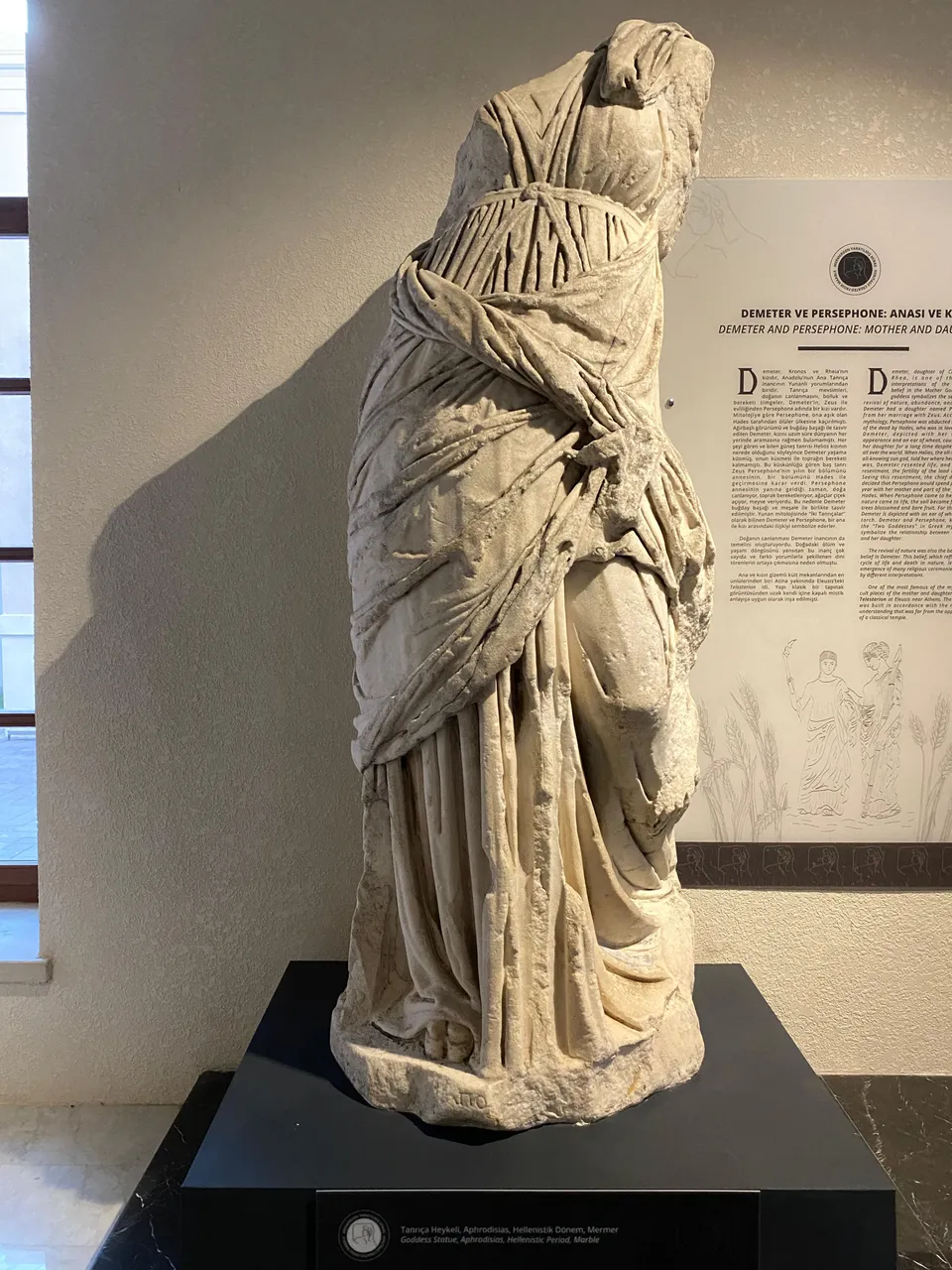
In the Hellenistic period, it was very common to make statues of gods and goddesses. Even in this museum there are many statues of gods and goddesses. This is one of them. It's not hard to recognize that it's Aphrodite. Aphrodisias is a common name for many ancient cities dedicated to Aphrodite. You can find the source here.
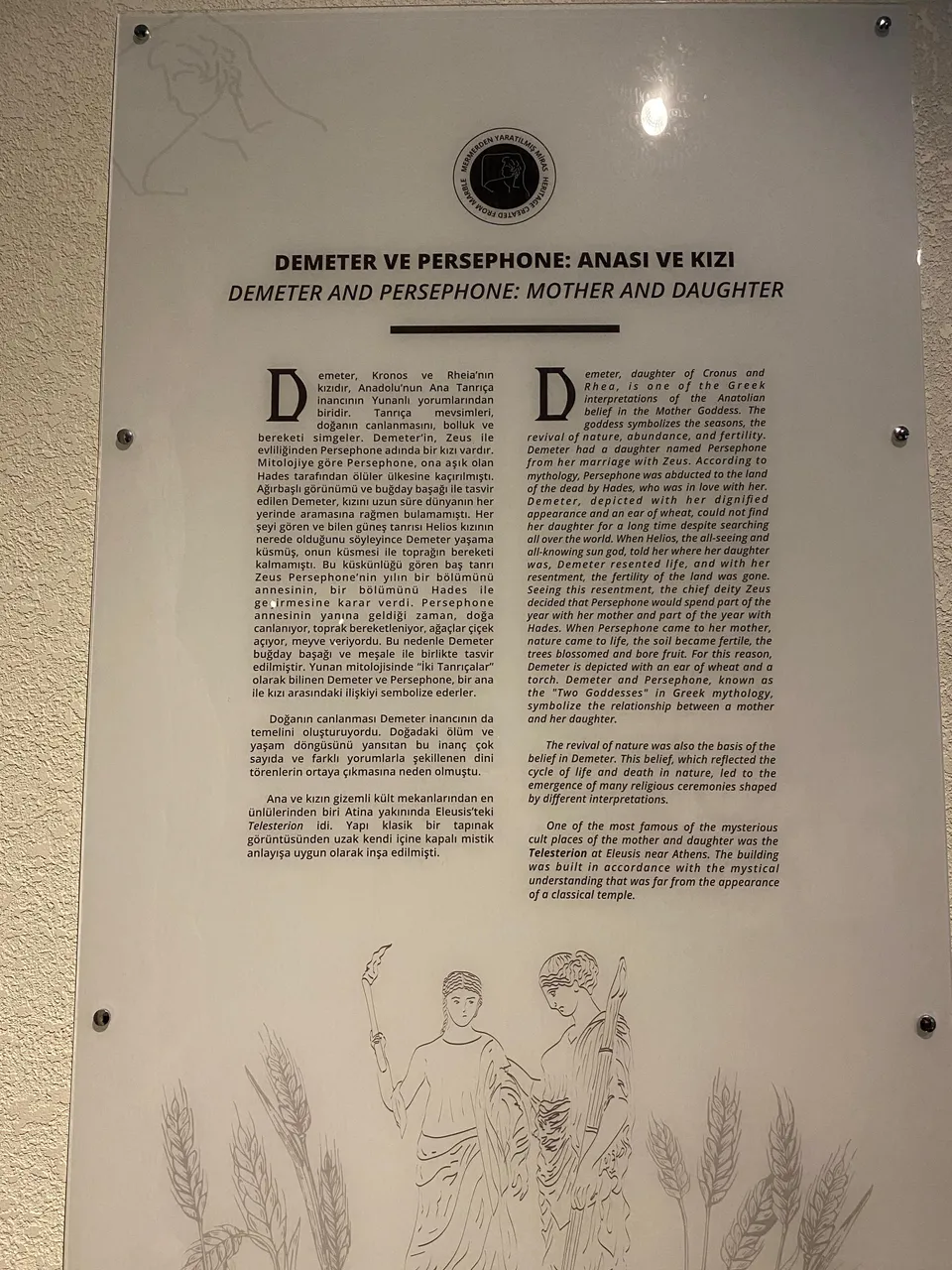
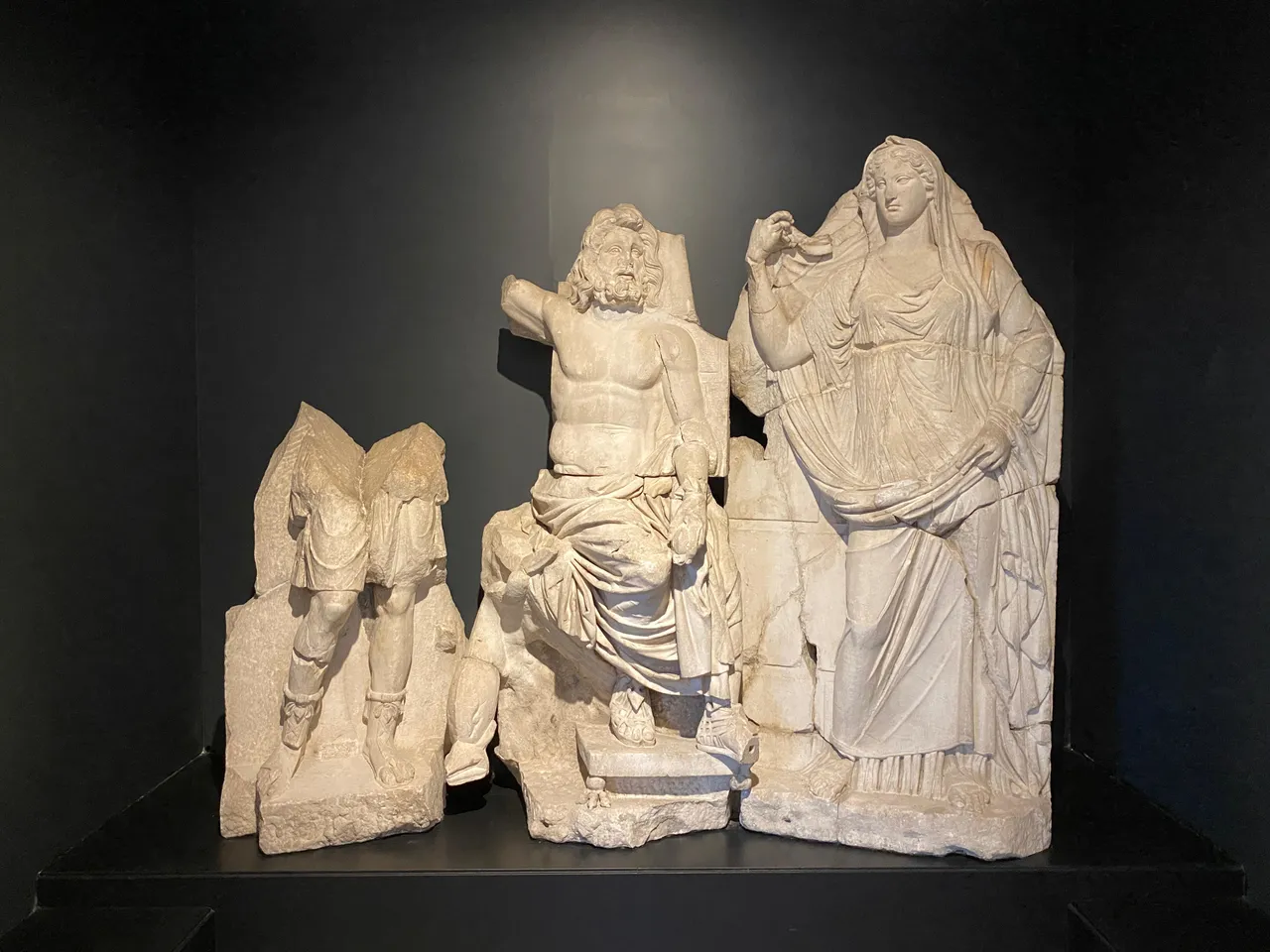
Here is an interesting story. Demeter is a goddess who symbolizes the revival of nature, abundance and fertility. Demeter had a daughter named Persephone from her marriage to Zeus. According to mythology, Persephone was kidnapped to the land of the dead by Hades who fell in love with her. Demeter searches everywhere but cannot find her daughter. Helios, the all-seeing and all-knowing sun god, tells her about the situation and Demeter resents life when she learns that her daughter has been kidnapped. When she sulks, the land has no fertility. Seeing this resentment, Zeus decides that Persephone will stay with her mother one part of the year and with Hades the other. When Persephone comes to her mother, nature comes to life, the soil becomes fertile and the trees blossom. When she left, nature withered again. This reminds me of the seasons. Like spring and fall. I wish Zeus hadn't married every goddess he saw and had a child. We wouldn't have such sad stories.
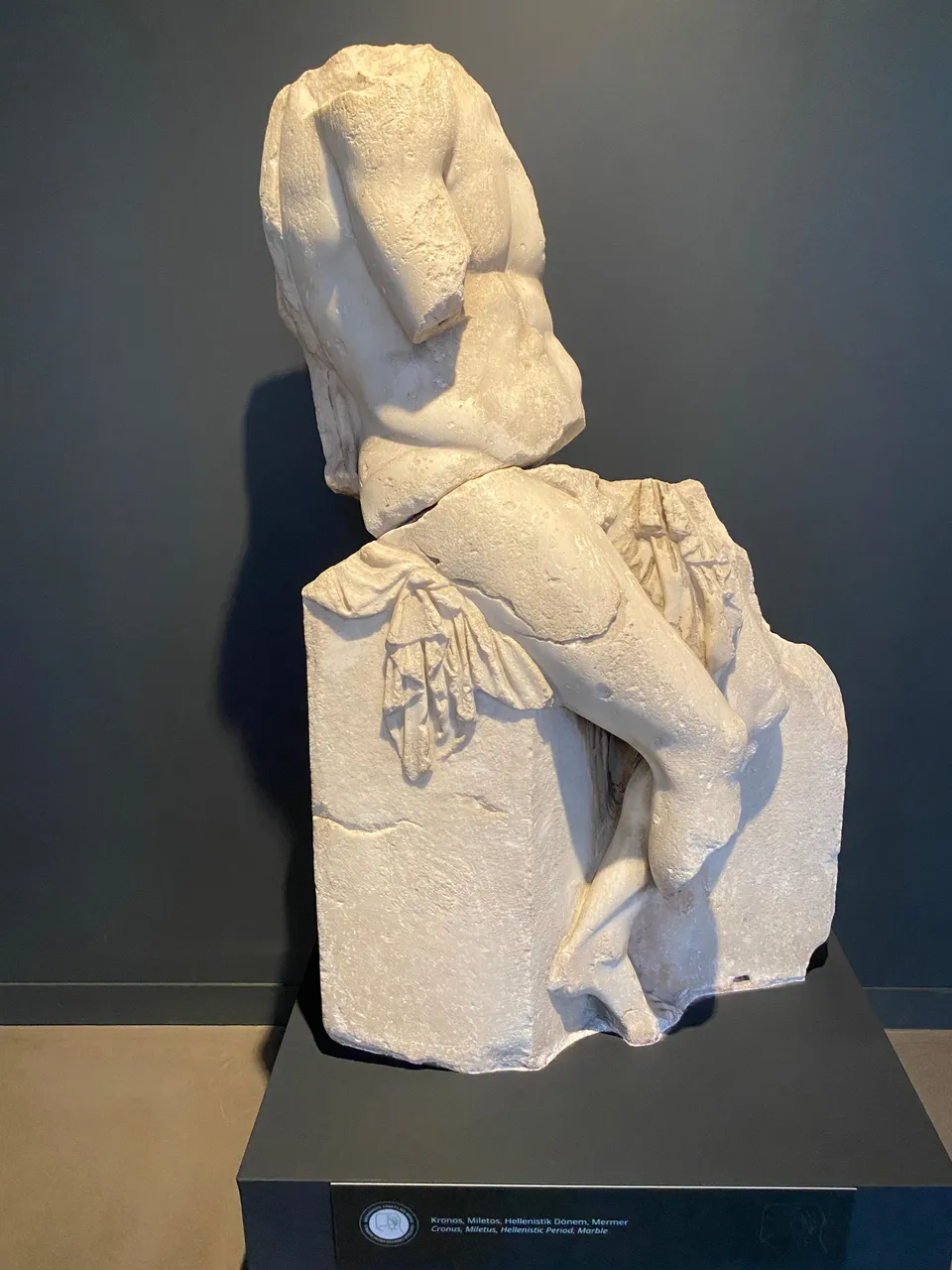
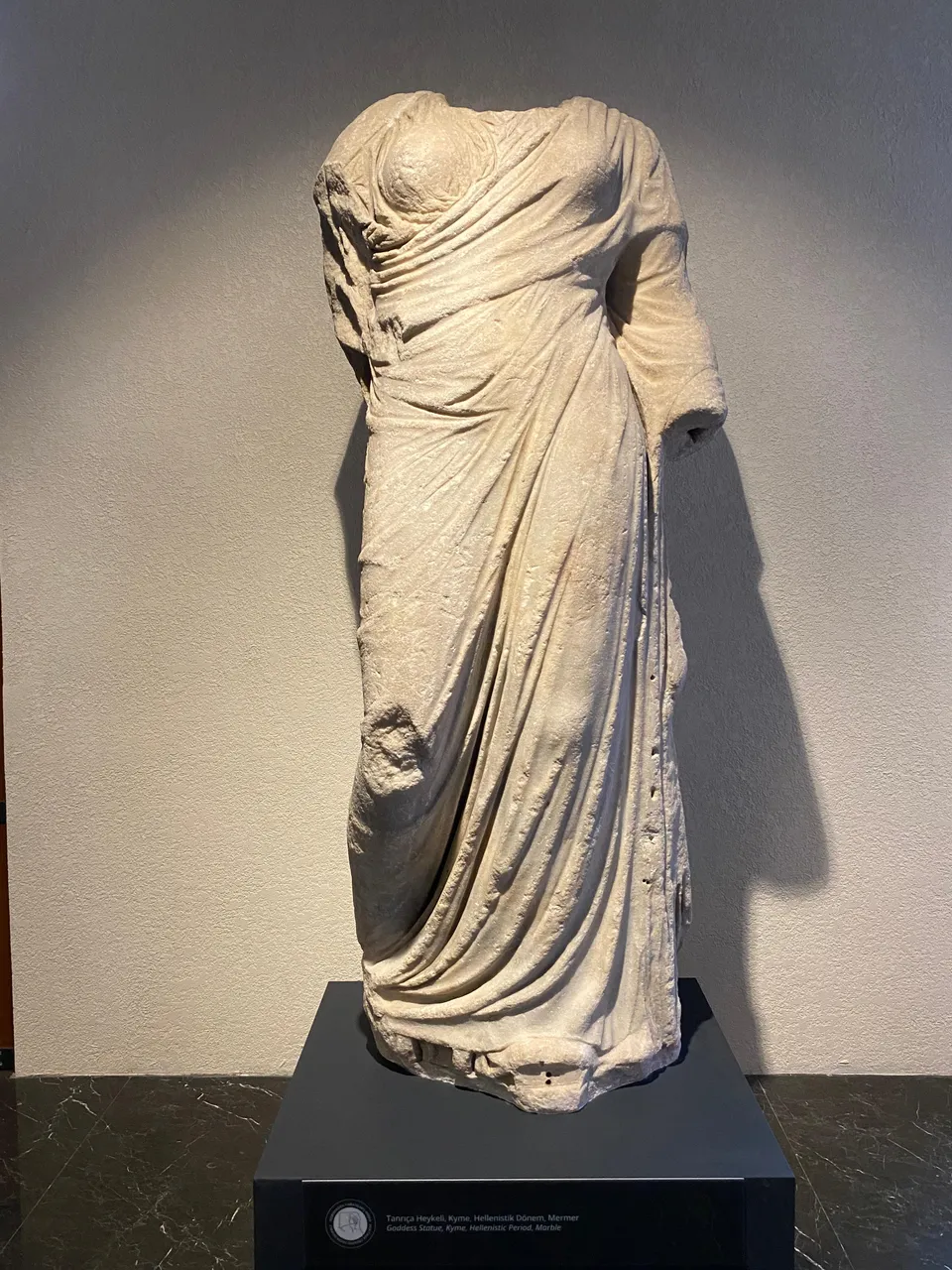
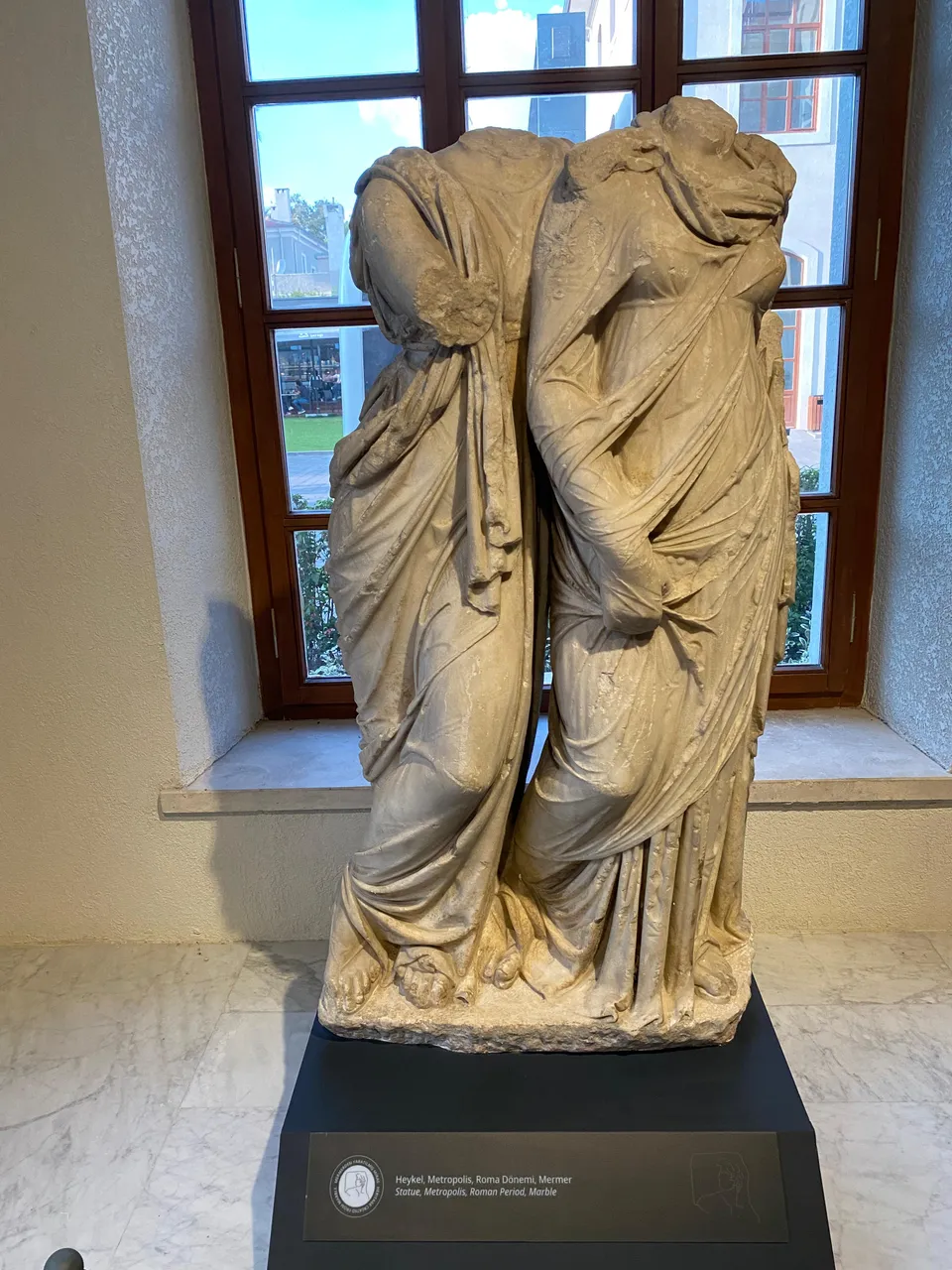
Different god-goddess statues from different ancient cities. I know I say this every time, but even the details of the dresses look marvelous.
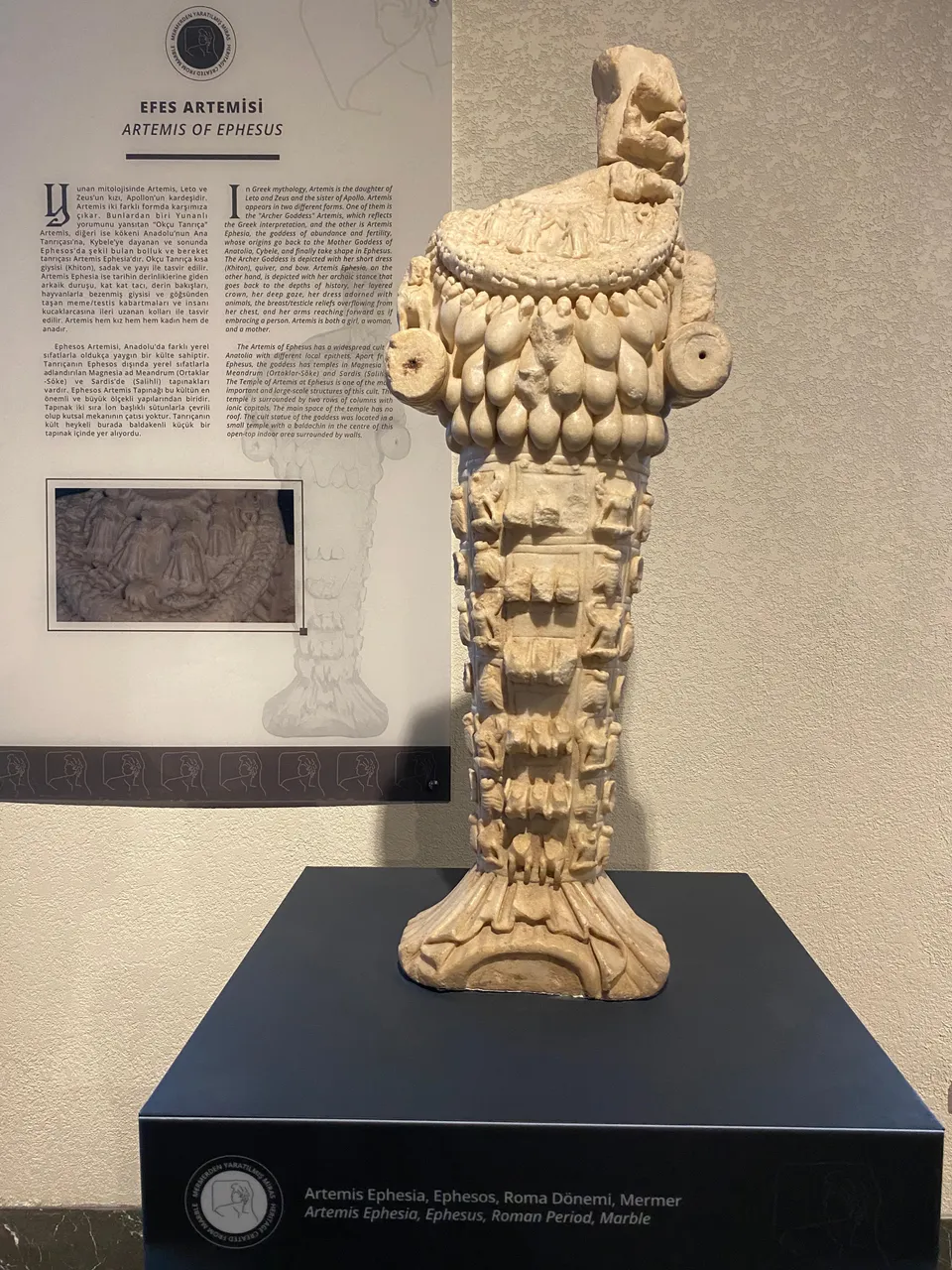
This is Artemis of Ephesus. What do you mean, Artemis is only one and she is the daughter of Zeus and sister of Apollo? There is a different belief in Anatolia and it's more like the goddess of fertility. Her dress is also very different from the other Artemis. The temple of Artemis in Ephesos is one of the most important and largest structures of this cult.
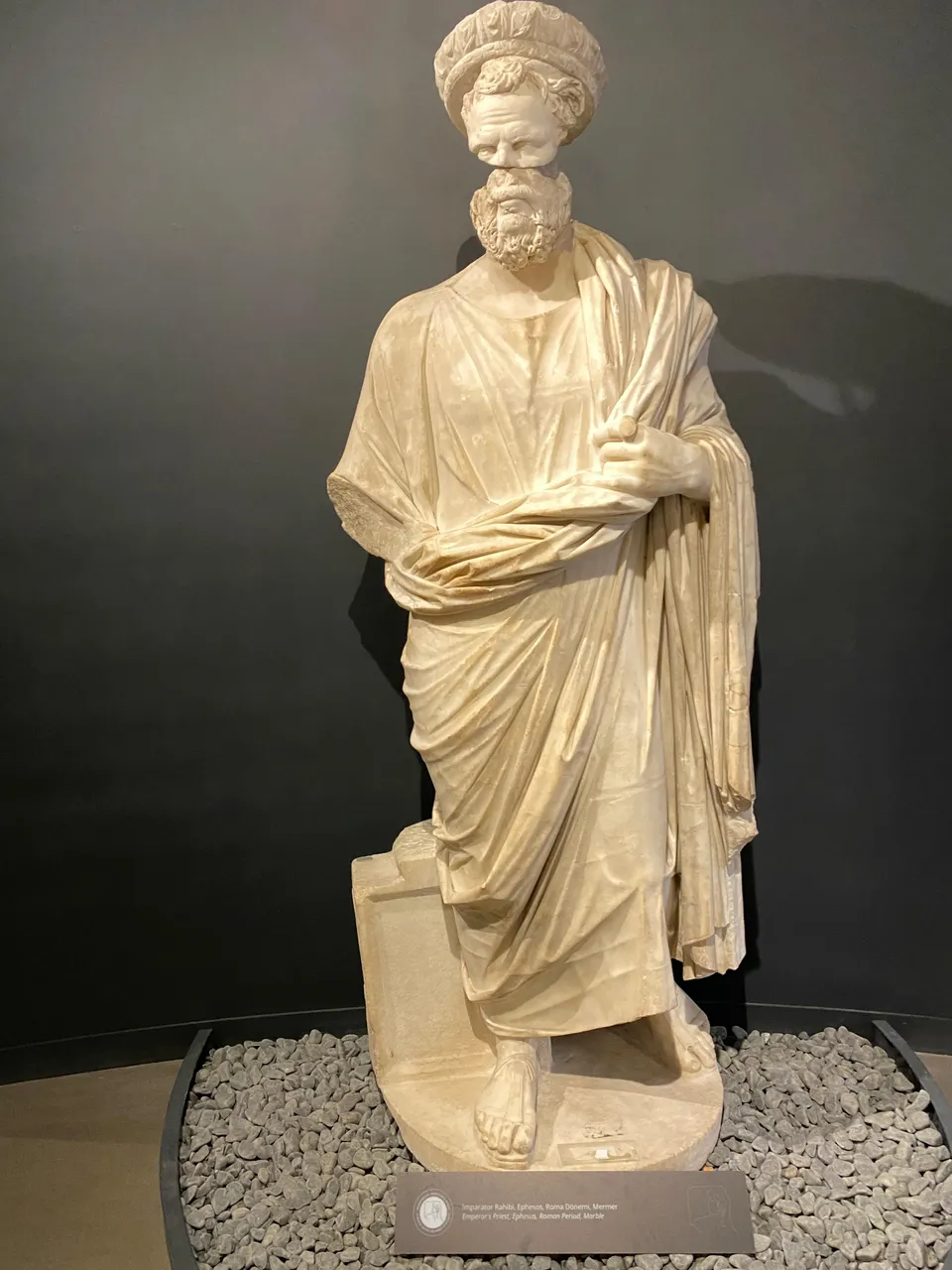
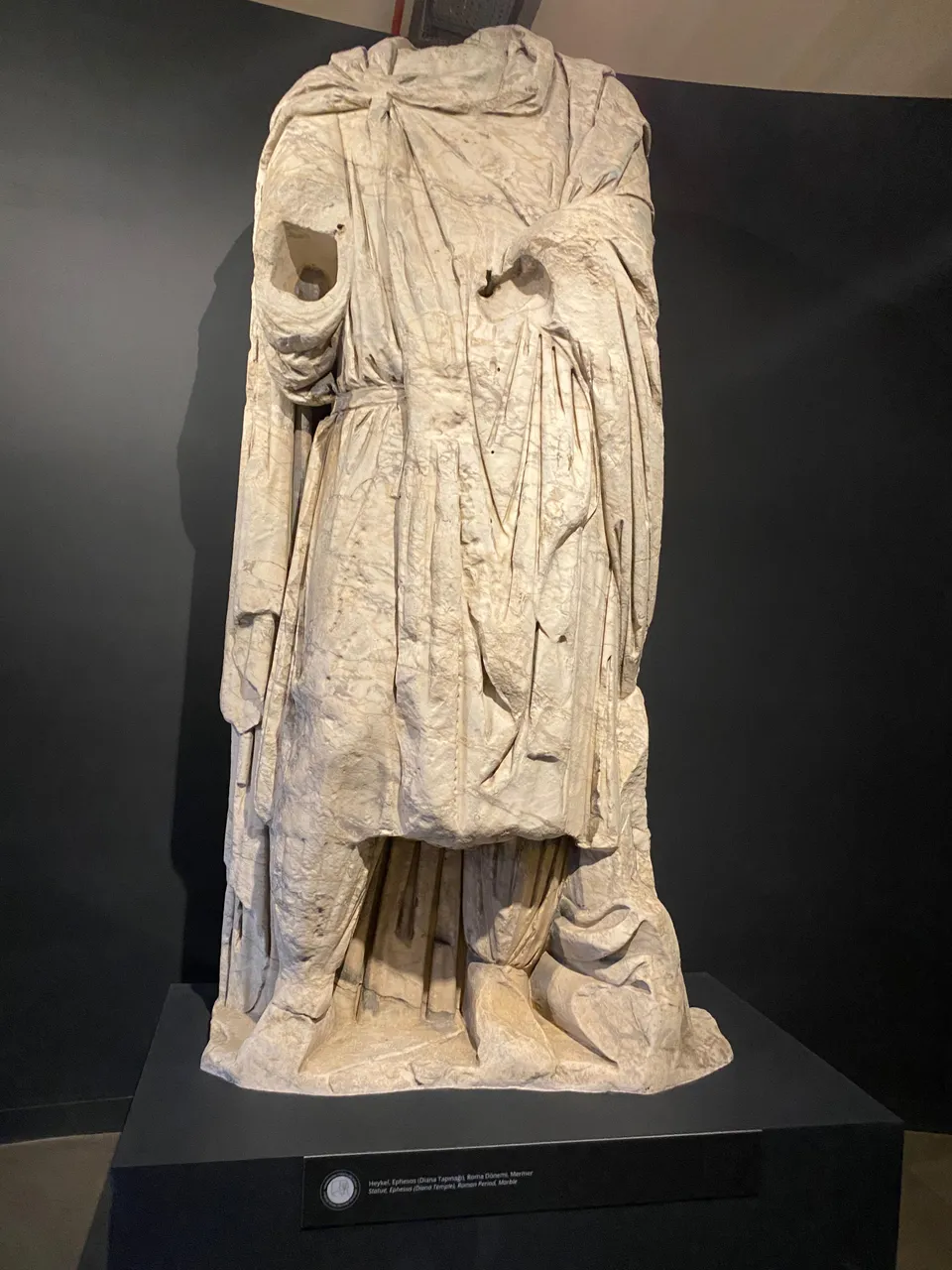
These two sculptures were also one of the main attractions there. The first one looked different because part of her head was a separate piece and the second one was really huge. I have a photo of my brother in front of it and you can see how big it is in the photo below.
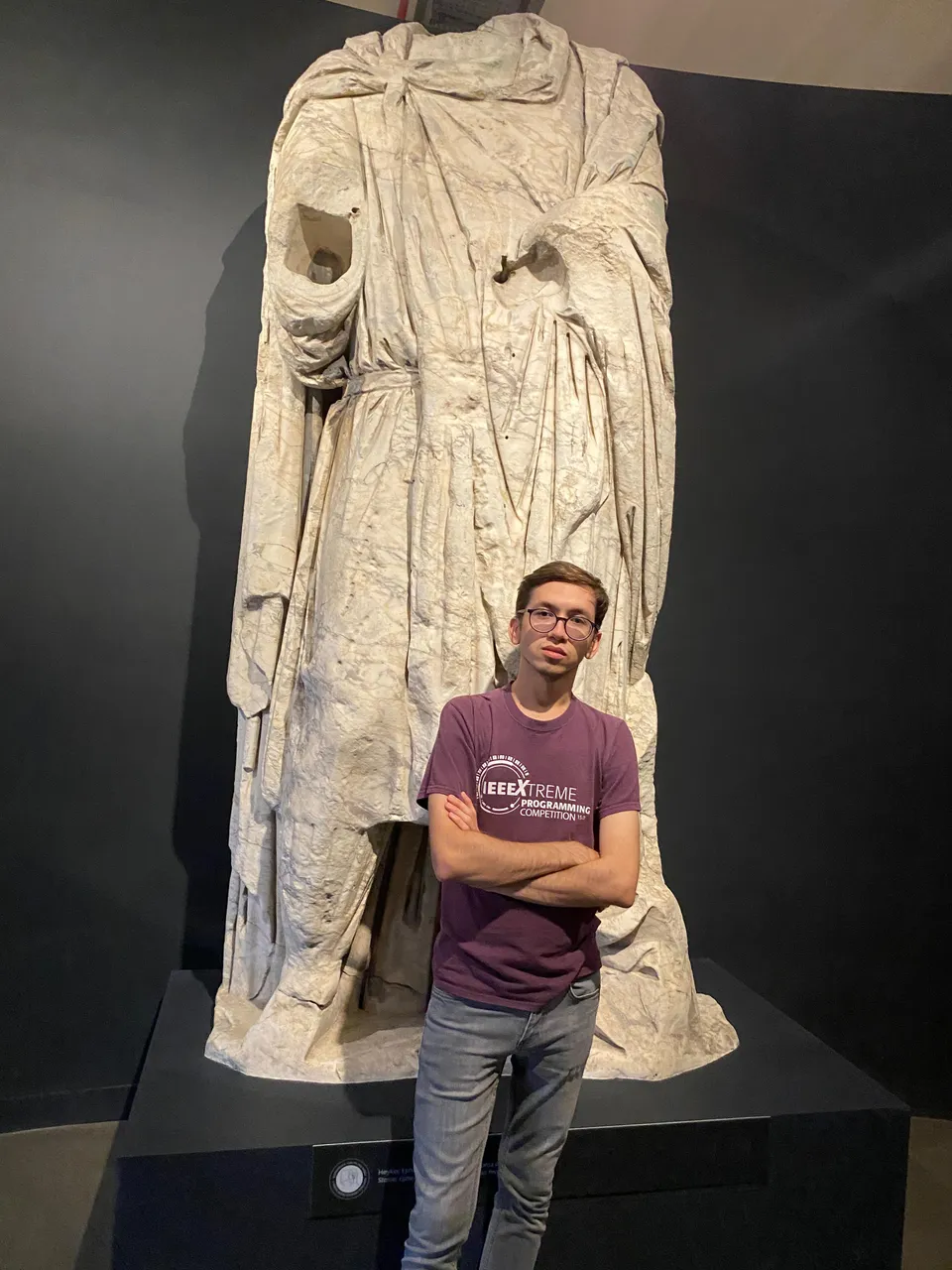
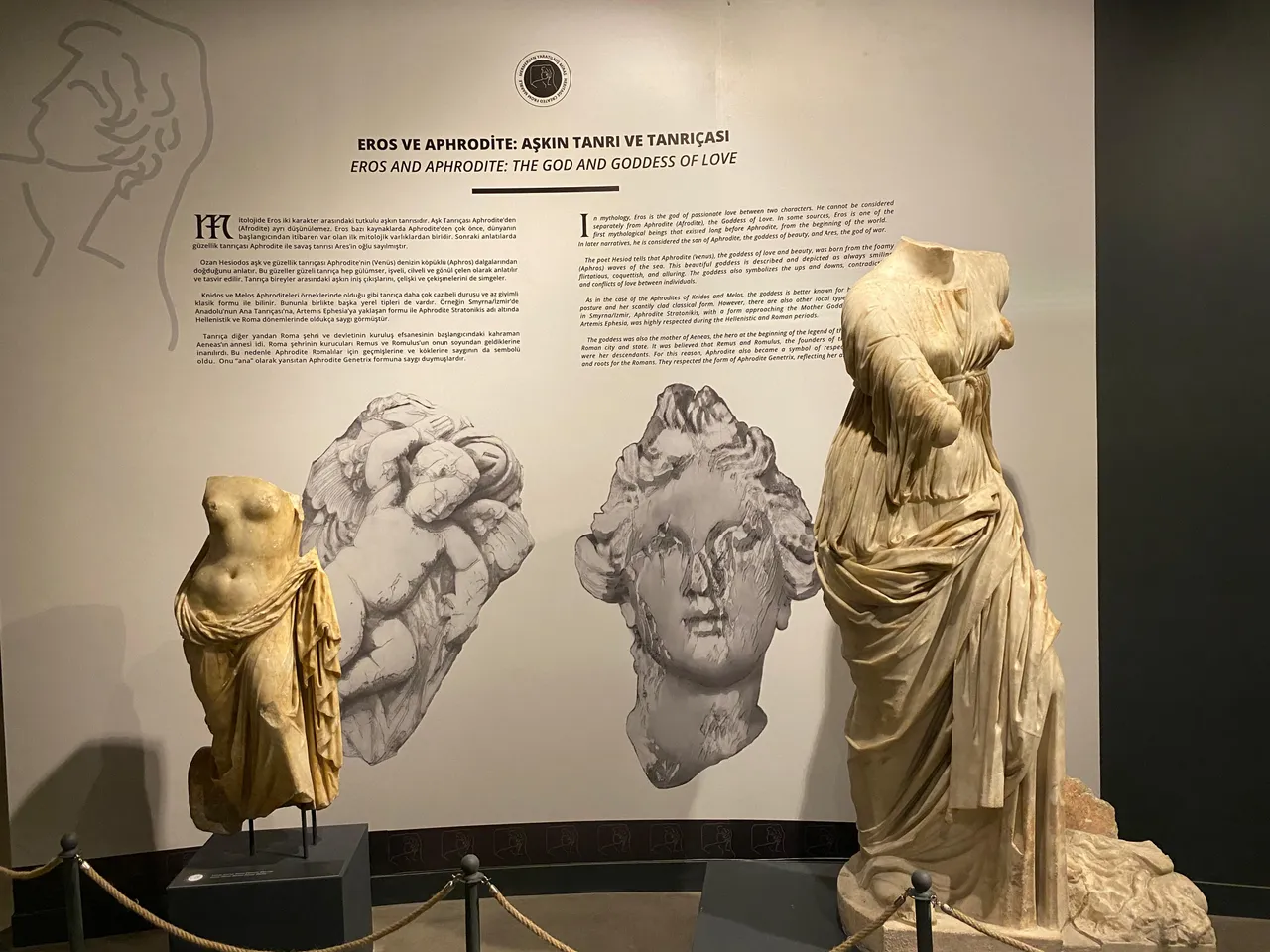
If we are talking about statues, we can't skip Eros and Aphrodite, can we? The god and goddess of love. Eros is mentioned in some sources as one of the first mythological beings that existed from the beginning of the world, long before Aphrodite. In later citations, he is listed as the son of Aphrodite and Ares, the god of war.
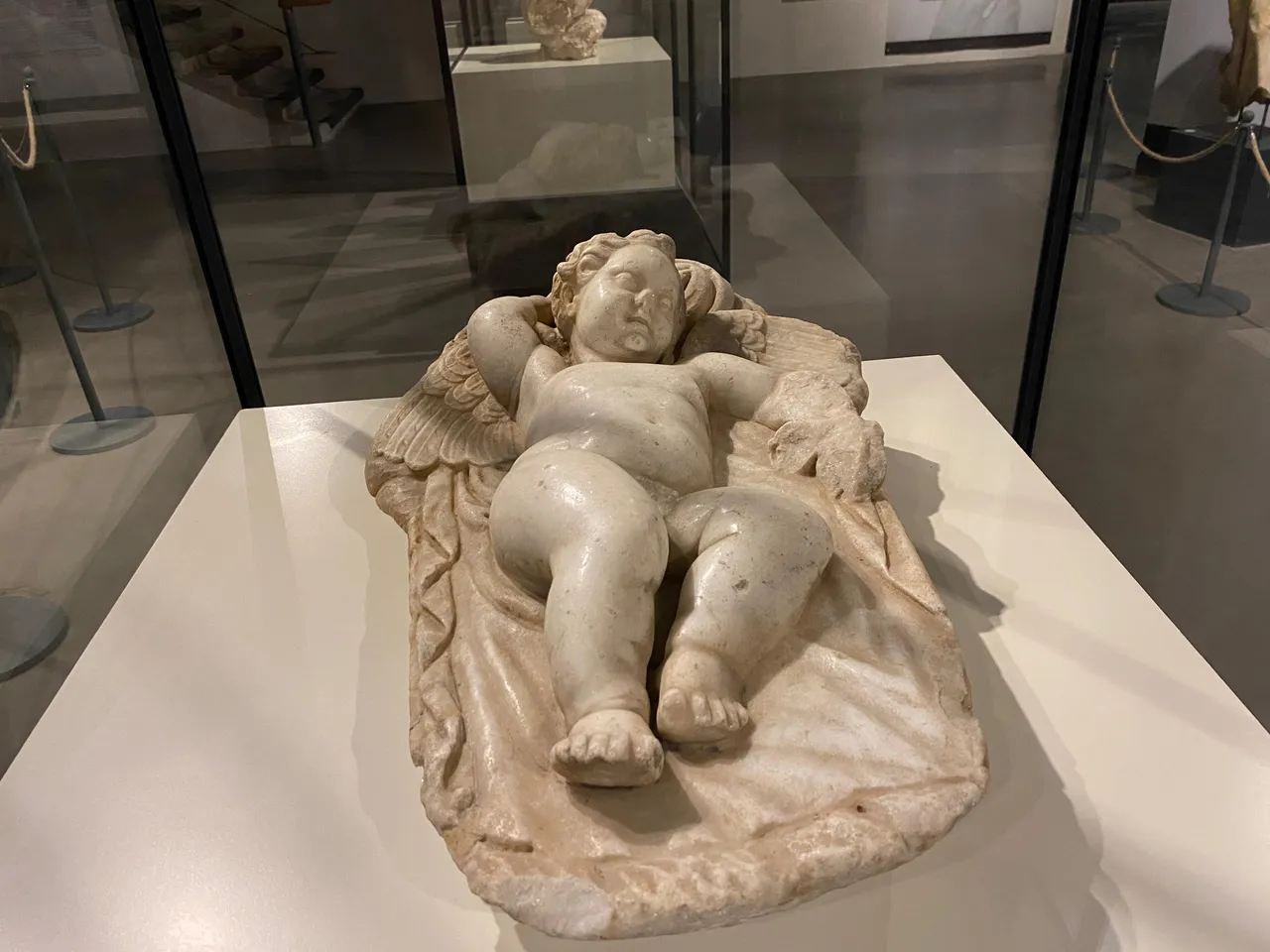
You have all guessed that this is little Eros. It is not surprising that from the union of war and love, a being representing the love between two people was born.
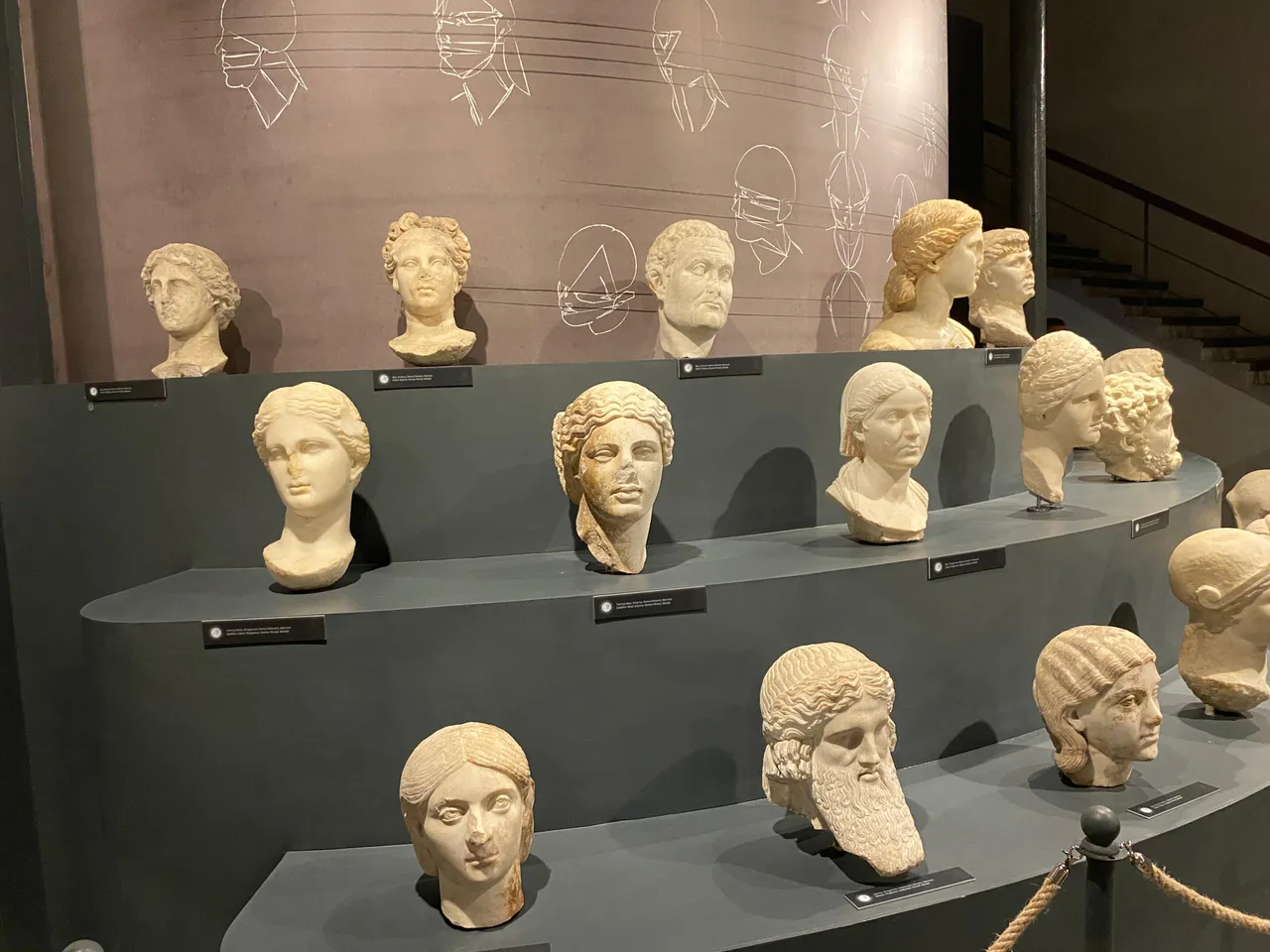
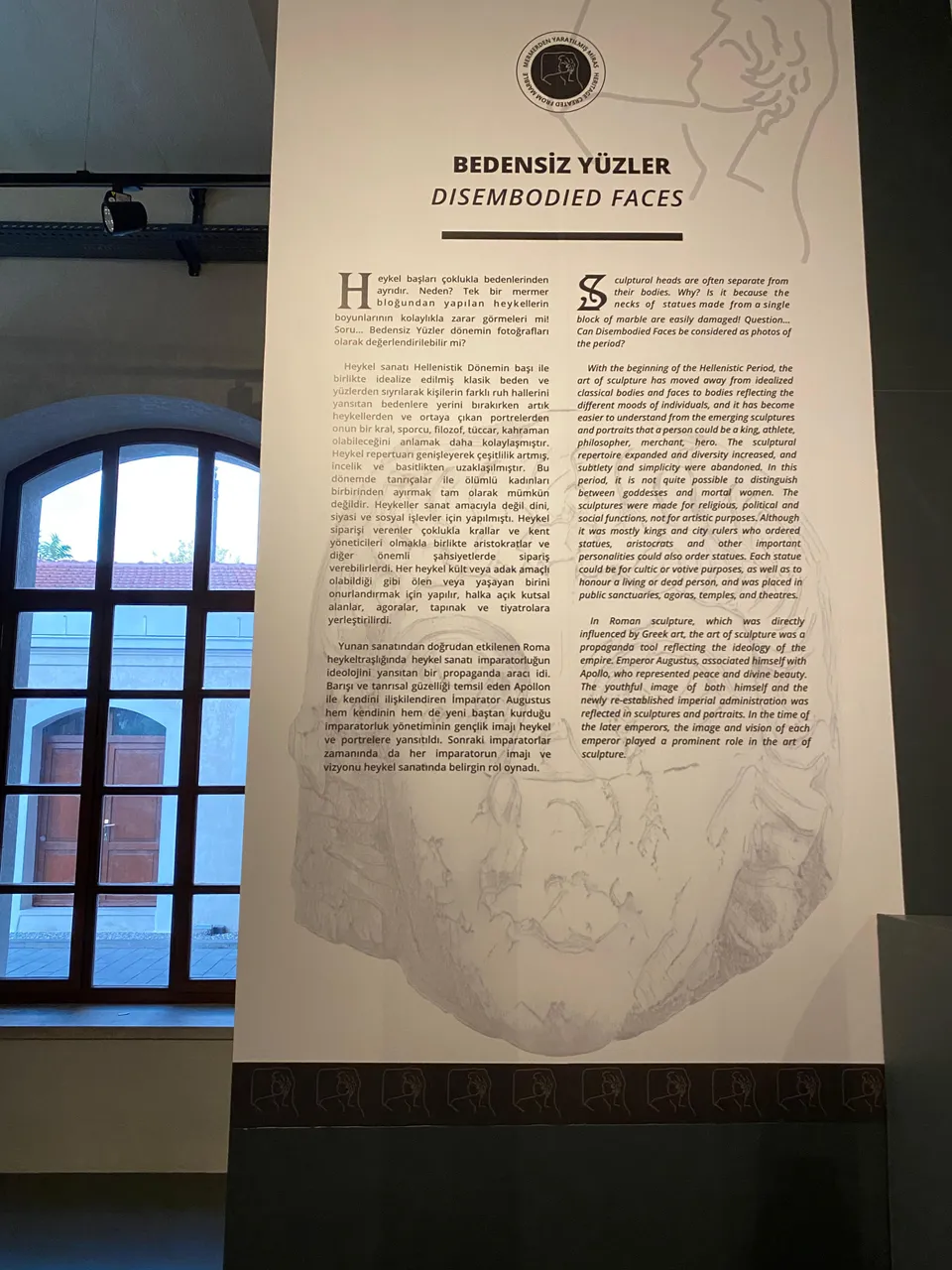
Many of the statues are separate from their bodies, as you can see in the photo above. Is this because their necks are vulnerable to breakage? Or could some of them have been made just as disembodied faces? This seems like a big possibility to me. There is already an information article above that some of them were made without bodies. What do you think about this?
I think that's enough for today! I think we have learned a lot about sculptures and how they are made. Sharing what I have learned with you helps me to reinforce it. Thank you very much for reading, I hope you liked it. Take care and have a great day! Don't forget to walk around and have fun.

Selam gezmeyi seven dostlarım! Umarım şu anda hepiniz harika bir yeri ziyaret ediyorsunuzdur ya da etmişsinizdir. Bunun verdiği keyif gerçekten hiçbir şeyde yok. Ben bunu Arkeoloji ve Etnografya müzesinde yaşadım ve orada çektiğim fotoğrafları sizlerle paylaşmaya devam ediyorum. Bugün birlikte geçmiş çağlardaki mermer işçiliğine göz atacağız!



Sizlerle hep antik çağlarda yapılan etkileyici heykelleri paylaştım ve bu heykellerin nasıl yapıldığına yapımının ne kadar sürdüğüne dair fikirler yürüttüm. Belki bugün bütün bu sorulara cevap buluruz. Romalılar milattan önce 2. yüzyılda Anadolu ve Yunanistan'a geldikten sonra geldikten orada yapılan heykelleri ve bu heykelleri yapan sanatçıları kendi ülkelerine götürdüler. Roma döneminde heykeltraşların çoğu Yunan kökenliymiş ve aşağı sınıftan görülüyormuş. Bu yüzden günümüzde az bir kısmının adını biliyoruz. Hak ettikleri değeri görmemişler diyebiliriz. Anadolu'da da önemli heykel atölyeleri varmış ve bu atölyelerden de önemli heykeltraşlar yetişmiş.

Heykel atölyesinin canlandırması. Tam bir dağınıklık gibi görünüyor ancak bu anlaşılabilir. O kadar büyük heykellerin arasında yere dökülenleri sürekli temizlemekle uğraşamazlar. Bu heykelleri hareket edebilen bir şeylerin üzerinde yapıyor olmaları güzel. Aksi takdirde yapıldıktan sonra satın alacak kişinin götürmesi inanılmaz zor olurdu.


O döneme ait bazı güzel heykeller. Heykeltraşların kendi aralarında konuşmalarını hayal edin. Bir aslan heykeli yapıyorum ve en zor kısmı aslanın dişlerini yapmak. Üstelik bunu bir soylu için yapıyorum ve düzgün yapmazsam beni öldürecek. Diğeri muhtemelen şöyle cevap veriyor. Seninki en azından bir aslan ben kralın heykelini yapmaya çalışıyorum. Ben düzgün yapamazsam sadece öldürmekle kalmazlar beni diri diri yakarlar. Neden birden böyle kötü bir sohbete dönüştü anlamadım. Eğlenceli olması gerekiyordu...

Helenistik dönemde tanrı ve tanrıça heykellerini yapmak çok yaygınmış. Bu müzede bile bir sürü tanrı ve tanrıça heykeli var. Bu da onlardan bir tanesi. Afrodit olduğunu anlamak çok da zor değil. Aphrodisias Afrodit'e adanan birçok eski çağ kentine verilen ortak bir isim. Kaynağı burada bulabilirsiniz.


İşte size ilginç bir hikaye. Demeter, doğanın canlanmasını, bolluğu ve bereketi simgeleyen bir tanrıça. Demeter'in Zeus ile evliliğinden Persephone adlı bir kızı olur. Mitolojiye göre Persephone ona aşık olan Hades tarafından ölüler ülkesine kaçırılır. Demeter her yeri arar ancak kızını bulamaz. Her şeyi gören ve bilen güneş tanrısı Helios ona durumu anlatır ve Demeter kızının kaçırıldığını öğrenince yaşama küser. O küsünce toprağın hiç bereketi kalmaz. Bu küskünlüğü gören Zeus Persephone'nin yılın bir döneminde annesi ile diğer döneminde Hades ile kalmasına karar verir. Persephone annesinin yanına geldiğinde doğa canlanır, toprak bereketlenir, ağaçlar çiçek açarmış. Ayrıldığında ise doğa tekrar solarmış. Bu bana mevsimleri çağrıştırıyor. Sanki ilkbahar ve sonbahar gibi. Keşke Zeus her gördüğü tanrıçayla evlenip bir çocuk yapmasaymış... Ortaya böyle acıklı hikayeler çıkmazdı.



Farklı antik kentlerden farklı tanrı-tanrıça heykelleri. Bunu her seferinde söylediğimi biliyorum ama elbiselerin detayları bile muazzam görünüyor.

Bu gördüğünüz Efes Artemis'i. Nasıl yani Artemis bir tanedir ve o da Zeus'un kızı ve Apollon'un kardeşidir mi diyorsunuz? Anadolu'da farklı bir inanış var ve bu daha çok bereket tanrıçası gibi. Giyinişi de diğer Artemis'ten çok farklıdır. Ephesos Artemis tapınağı bu kültün en önemli ve en büyük yapılarından biridir.


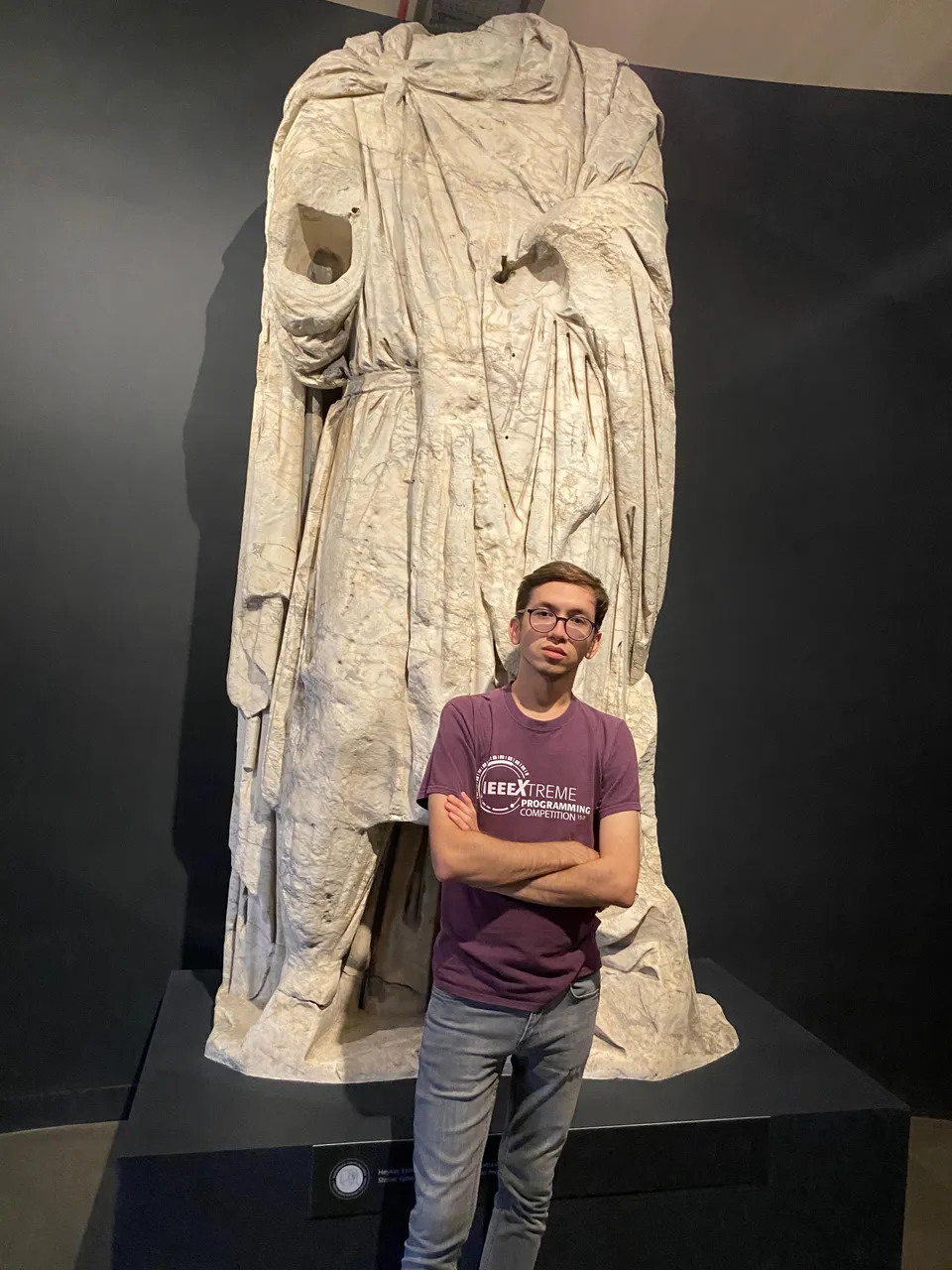

Heykellerden bahsediyorsak Eros ve Afrodit'i atlayamayız değil mi? Aşkın tanrı ve tanrıçası. Eros bazı kaynaklarda Afrodit'ten çok daha önce dünyanın başlangıcından itibaren var olan ilk mitolojik varlıklardan biri olarak geçer. Sonraki alıntılarda ise Afrodit ve savaş tanrısı Ares'in oğlu olarak sayılmıştır.

Bunun minik Eros olduğunu hepiniz tahmin etmişsinizdir. Savaşın ve aşkın birlikteliğinden iki kişinin arasındaki aşkı temsil eden bir varlık doğmasına şaşırmamak gerekir.


Heykellerin birçoğu yukarıdaki fotoğrafta da gördüğünüz gibi bedenlerinden ayrıdır. Bunun sebebi boyun kısımlarının kırılmaya müsait olması mı? Yoksa bazıları sadece bedensiz yüzler olarak yapılmış olabilir mi? Bana bu büyük bir ihtimal gibi geliyor. Zaten yukarıda da bazılarının bedensiz yapıldığına dair bir bilgilendirme yazısı var. Siz bu konuda ne düşünüyorsunuz?
Bugünlük bu kadar yeterli olduğunu düşünüyorum! Heykellere ve nasıl yapıldıklarına dair birçok şey öğrendiğimizi düşünüyorum. Sizlerle öğrendiğim şeyleri paylaşmak onları pekiştirmemi sağlıyor. Okuduğunuz için çok teşekkür ederim, umarım beğenmişsinizdir. Kendinize iyi bakın ve harika bir gün geçirin! Bol bol dolaşmayı ve eğlenmeyi unutmayın.
